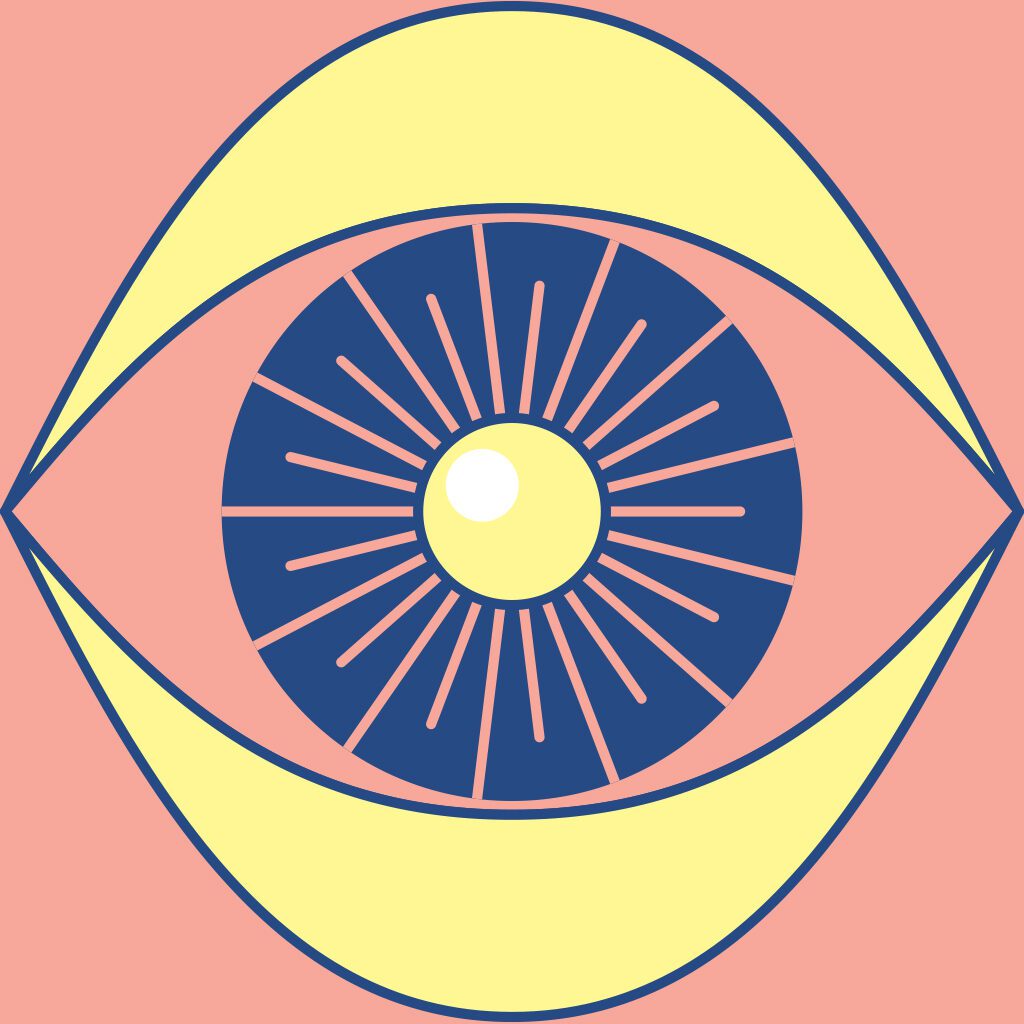Sunscreen isn’t the only tool you need to protect against the sun – sunglasses are the key to preventing damage to your eyes. If you’re often outdoors and enjoy hiking, swimming, or skiing, or if you use a tanning bed, you’re exposed to ultraviolet (UV) rays. Here, we’ve consulted with ophthalmologists to find out more about how UV rays affect the eyes and how to mitigate damage and keep the eyes healthy.
Looking directly at the sun during an eclipse isn’t the only way you can injure your eyes, though doing so can cause permanent vision loss. UV rays also reflect off of water or snow, sand, or cement – even if it’s an overcast day. “UV light is damaging to almost all structures of the eye including the eyelids, cornea, lens, and retina,” says Dr. Elizabeth Mabry, an ophthalmologist at Mabry Eye Center. The damage can range from temporary discomfort to permanent injury. According to Dr. Paula Nicola, an ophthalmologist with Eye Care Chattanooga, “Chronic, long-term exposure increases your risk of developing cataracts as well as eye cancers. These risks increase with age, as a lifetime of exposure has a cumulative effect.”
Photokeratitis


Photokeratitis is the most common form of damage due to UV exposure – a temporary condition similar to a sunburn for the cornea (the clear part of the eye in front of the pupil) and conjunctiva (tissue covering the whites of the eye and the inside of the eyelid). Symptoms typically last between six and 24 hours and usually disappear after 48 hours. The longer the eyes were exposed to UV rays, the more severe the symptoms may be. Photokeratitis can cause pain, redness, or a gritty sensation in the eyes. Other symptoms include teary eyes, twitching eyelids, blurry vision, swelling, light sensitivity, and headaches.
Act immediately if you experience any symptoms – head indoors and darken the room, remove contact lenses, and don’t rub or touch your eyes. Place a cold washcloth over closed eyes or use eye drops to relieve discomfort. You can also take a nonsteroidal anti-inflammatory like ibuprofen. If symptoms last longer than a couple of days, visit your ophthalmologist to determine whether there’s more severe damage.
Macular Degeneration
Chronic exposure to UV light ages the structures of the eyes and “may accelerate cataract formation in the lens of the eye,” explains Dr. Mabry. “It’s one of many factors that increase the risk of vision loss from age-related macular degeneration.” Macular degeneration happens when there are changes to the macula, a part of the retina on the inside back layer of the eye, which causes a gradual loss of central vision. That can occur in a dry (atrophic) or wet (exudative) form, though the dry form is more common. The symptoms of macular degeneration are subtle and can be difficult to detect, but they include blurry vision, straight lines appearing wavy, shapes appearing distorted, and a dark or empty area in the center of your vision. There are several risk factors, including age, heredity, smoking, and UV light exposure.
Unfortunately, there’s no treatment for dry macular degeneration, and though central vision loss can be severe, peripheral vision is typically unaffected. This means that it may be difficult to read or drive, but it’s still possible to move around easily and develop new ways of accomplishing daily activities.
Skin Cancer & Ocular Melanoma



It’s easy to forget the skin around the eye when talking about sun damage. Dr. Mabry explains, “The eyelid skin is the thinnest skin of the body. Exposure to UV light leads to wrinkles, sagging, and increased pigmentation.” UV light is also associated with some skin cancers including basal cell carcinomas, cutaneous melanoma, and squamous cell carcinomas, which can occur on the cornea and inside of the eye – not just the skin.
Ocular melanoma is a rare eye cancer diagnosed in about 2,500 people in the United States each year. Though it’s not clear why ocular melanoma develops, it can be caused, in part, by UV exposure. Ocular melanoma develops in the cells that produce pigment when they mutate, multiply, and collect in or on the eye.
Eyes have three layers, and ocular melanoma most commonly occurs in the uvea (the middle layer). Depending on the size and location of the melanoma, chemotherapy eye drops, radiation therapy, or surgery may be the next steps.
Risk factors for ocular melanoma include “light-colored eyes, fair skin, and an inability to tan or skin that sunburns easily,” says Dr. Mabry. It can be difficult to detect because it is not visible in the mirror and doesn’t cause early symptoms, which is why it’s so important to have regular appointments with your eye doctor. “The majority of the time, ocular melanoma occurs sporadically,” says Dr. Nicola. “If you have been diagnosed with a freckle (known as a choroidal nevus) in the retina, you have an increased chance of developing ocular melanoma and need to be checked periodically – just as you would for unusual freckles on your skin.” Additionally, as with most cancers, the risk of ocular melanoma increases with age.
Prevention
The good news is that prevention of these issues is relatively easy – protect your eyes with sunglasses! Look for sunglasses or snow goggles that block up to 99% of UV rays, and consider wrap-around glasses with side panels and a wide-brimmed hat or visor to block as much UV light as possible. Don’t forget sunglasses for the kids; their eyes are especially sensitive. Because exposure accumulates over time to increase risk, Dr. Nicola recommends getting in the habit of protecting your eyes early. She advises, “Wear eye protection in the form of UV-blocking sunglasses. It is most important to start wearing the appropriate sunglasses in childhood and continue throughout your lifetime.”



Blue, green, and hazel eyes are more susceptible to damage, and UV exposure to light irises may increase the risk of rare eye cancers. There are also some medications that can increase sunlight sensitivity, including some antibiotics, certain birth control, and estrogen pills. Tanning beds can produce UV levels nearly 100 times as much as you would normally get from the sun, so consider limiting your time tanning. According to Dr. Mabry, you should also “limit outdoor activities between 10 a.m. and 4 p.m. when sunlight is most intense.”
Dr. Mabry shares, “While some eye disease can be detected by the patient, some diseases, especially in their early stages, can only be detected with an eye examination.” There are no specific tests for UV-related eye damage, but a comprehensive eye exam will expose most eye disease. “People often confuse the part of the eye examination to determine a glass prescription as the ‘eye’ exam,” Dr. Mabry reveals. “However, the glass prescription would not uncover any eye disease. An eye exam normally includes recording the visual acuity in each eye as well as the intraocular pressure. The slit lamp, which magnifies images, is used to examine the structures of the eye in great detail. When the pupil is dilated, a special lens is used to examine the retina.”
Enjoy the sunshine, but don’t forget your sunglasses – or regular visits to an eye care specialist to keep up with your eye health and catch any issues quickly.



Elizabeth Mabry, MD
Opthalmologist, Mabry Eye Center



Paula Nicola, MD
Ophthalmologist, Eye Care Chattanooga

